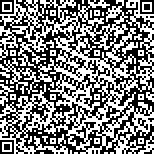| This article has been:Browse 1766Times Download 3661Times |

scan it! |
|
|
| DOI:10.13522/j.cnki.ggps.2020012 |
|
| Intra-annual Spatiotemporal Variation in Salt Content in the Plough Layer in Hetao Irrigation District |
|
HUA Qianji, FENG Shaoyuan, GE Zhou, XU Ying
|
|
College of Hydraulic Science and Engineering, Yangzhou University, Yangzhou 225009, China
|
| Abstract: |
| 【Background】Soil salinization is a main abiotic factor causing land degradation threatening agricultural production; it could make agroecological systems vulnerable, especially in arid and semi-arid regions. Hetao irrigation district is a typical salt-affected inland area in north China, characterized by shallow groundwater, scarce precipitation and intensive evaporation. Understanding spatiotemporal variation of soil salinity in the district is essential to improving its water use efficiency and salinization management.【Objective】This paper aims to study the intra-annual spatiotemporal variation in salt content in the plough layer and assess its risk in resulting in salinization across the district.【Method】The study was based on field data measured from autumn 2018 to autumn 2019, and we analyzed them using geostatistics and descriptive statistics. The probability distribution map of the salt content was obtained by the indicator Kriging interpolation. 【Result】①Salt content in different soil layers was ranked in the order of 0~10 cm >10~20 cm >20~40 cm, irrespective of sampling date and time. Salt accumulated in soil during the summer irrigation. Prior to the third irrigation, salt content in natural soil did not show noticeable change but accumulated rapidly since then. A rapid salt accumulation in 20~40 cm and 0~10 cm soil was found in both cultivated and natural lands, although the accumulation in the latter was faster than in the former. Regardless of sampling date and time, salt content in 0~10 cm soil varied more erratically than in 10~20 cm and 20~40 cm soils. The coefficient of variation of the salt content was greater in natural land than in cultivated land. ②Semi-variance model of the salt content in 0~40 cm soil sampled at any date and time can be fitted to the spherical model with the range in 1 104~1 994 m. Salt content showed moderate spatial autocorrelation, and its spatial structure prior to the autumn irrigation was slightly stronger than that in other seasons. ③Areas with high-risk of soil salinization increased in 2019 with areas containing salt > 1 g/kg up from 26% to 90% against that in 2018. Salt-affected areas increased fast from the first irrigation to the second irrigation and from the third irrigation to the fifth irrigation.【Conclusion】Salt accumulated in soil surface during the summer irrigation, and dry-drainage was effective to control soil salinity. The spatial distribution of salt did not show noticeable change from the first irrigation to the fifth irrigation, but was similar at different sampling date and time. Both salt accumulation in soil and salinized areas had increased during this period, indicating the importance of desalinization using water-saving irrigation in the autumn. |
| Key words: soil salinity; Hetao irrigation district; analysis of salinization risk; indicator Kriging |
|
|